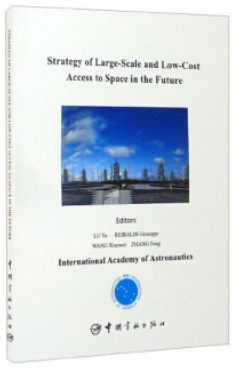内容简介
This study was conducted under the auspices of Commission III (Space Technology & System Development) of the International Academy of Astronautics (IAA), which benefited from review and comments by numerous members of the Academy, as well as members of the Commission. There were 12 participants in the study with many countries represented, such as China,France, India, Italy, Japan, Netherlands, Russia and the USA.The study could not have been completed to this level of detail without the timely and invaluable efforts of a diverse collection of experts from around the world who not only contributed their time and knowledge, but also provided material as well as their technical expertise to this study. These experts include members of the study group, the chapter authors to whom significant recognition should go, and especially the editors of the study (all names are provided in the Appendix). The diverse contributors included individuals (as well as former staff now retired) from space agencies, commercial firms,universities and non-profit organizations.Thanks are also given to the members of the International Academy of Astronautics review committees who provided highly useful comments on the final draft of this study report.
前言
This study was conducted under the auspices of Commission III (Space Technology & System Development) of the International Academy of Astronautics (IAA),which benefited from review and comments by numerous members of the Academy,as well as members of the Commission.There were 12 participants in the study with many countries represented,such as China,France,India,Italy,Japan,Netherlands,Russia,and the USA.The study could not have been completed to this level of detail without the timely and invaluable efforts of a diverse collection of experts from around the world who not only contributed their time and knowledge,but also provided material as well as their technical expertise to this study.These experts include members of the study group,the chapter authors to whom significant recognition should go,and especially the editors of the study (all names are provided in the Appendix).The diverse contributors included individuals (as well as former staff now retired) from space agencies,commercial firms,universities and non-profit organizations.Thanks are also given to the members of the International Academy of Astronautics review committees who provided highly useful comments on the final draft of this study report.In addition,many thanks to Prof.Roger Lenard,Prof.Giancarlo Genta,Prof.Yury Razoumy,Prof.Peter Swan,Prof.ZHANG Zhenjun,Dr.QIN Tong,Dr.LI Yufei,Mr.WANG Zequn,Ms.ZHANG Yangmei,Dr.KONG Lingchao,Dr.MA Tingting,Ms.DONG Xiaolin,Mrs.LVJing,Ms.HE Man and Dr.WANG Lin for their kind helps in this study.This study was also supported by the National Natural Science Foundation of China under Grant 61703437.It is noteworthy that,although the outbreak of the COVID-19 pandemic was encountered during the IAA peer-review process,the publication was completednormally in such special situation due to the great efforts made by the above experts,IAA office and reviewers,all of which are highly appreciated.
目录
Chapter 1 IntroductionChapter 2 Demand and Solution Analysis of L2AS in the Future2.1 Mission requirement analysis for access to space2.2 Challenges to current technologies providing access to space2.3 Low-cost technology for access to space2.4 Environmental impact of large-scale access to space2.5 Value analysisChapter 3 Key Technologies3.1 Launch vehicles3.2 Propellant depot3.3 Electromagnetic launch vehicles3.4 Nuclear propulsion launch vehicle3.5 Space elevatorChapter 4 Mission Mode and Solutions to L2AS in the Future based on Expendable Launch Vehicles4.1 Single rockets carrying multiple satellites4.2 Piggyback4.3 Exclusive small launch vehicles4.4 Airline flight mode of access to space in the futureChapter 5 Management of New Enterprises for L2AS in the Future5.1 Representative emerging commercial aerospace companies5.2 Enterprise management characteristics for L2AS in the future5.3 Project risk management for L2AS in the futureChapter 6 International Cooperation and Innovation Mode for L2AS in the Future6.1 International cooperation status and trends of the operation mode of L2AS6.2 The international cooperation mode assumption ofL2ASChapter 7 Relevant Laws and Policies7.1 Constraints of international space legal regulations faced by L2AS in the future7.2 Analysis of space legal issues driven by L2ASChapter 8 Conclusions and Recommendations8.1 Commercial aerospace has become irreversible and the quantity of payloads entering space will increase rapidly year-by-year8.2 Government guidance and control and international collaborationare indispensable8.3 Further scientifically exploration and demonstration the requirements of large-scale access to space……REFERENCESLIST OF ACRONYMSAPPENDIX
